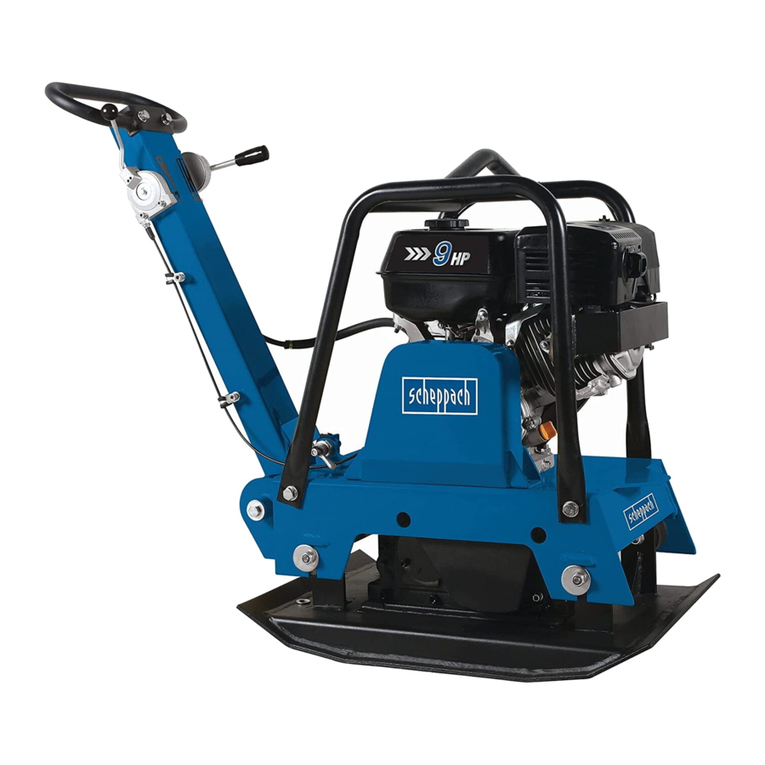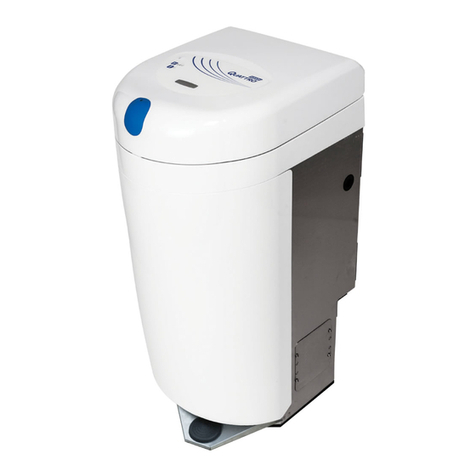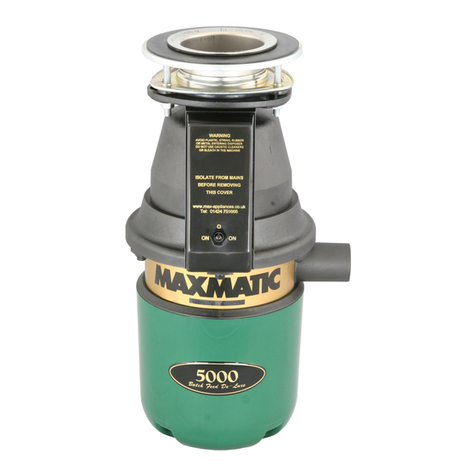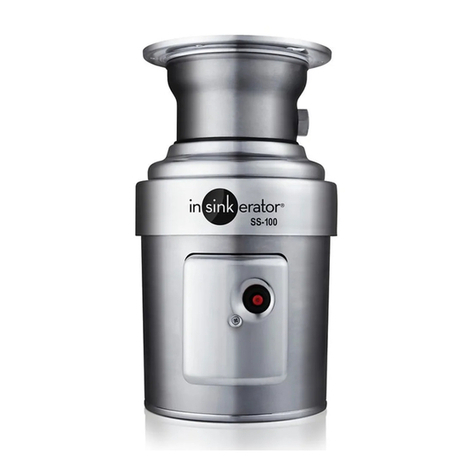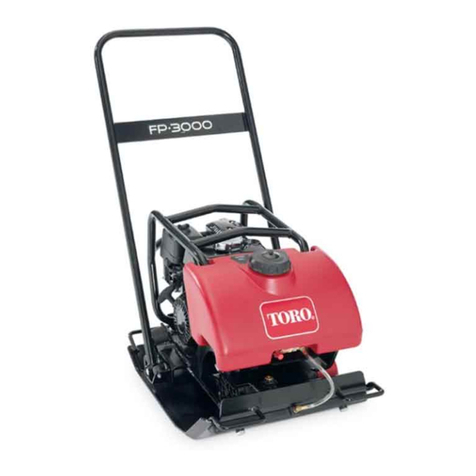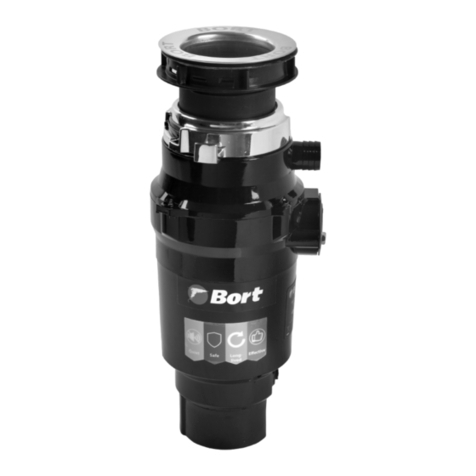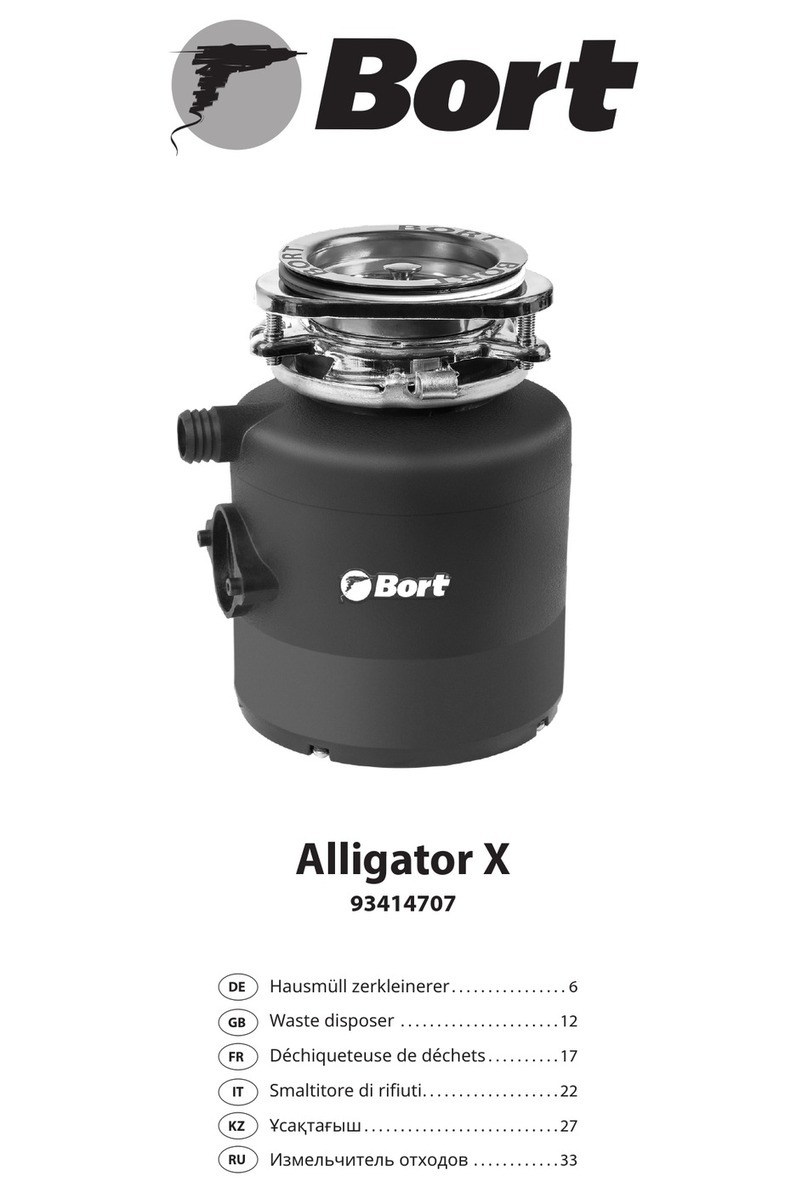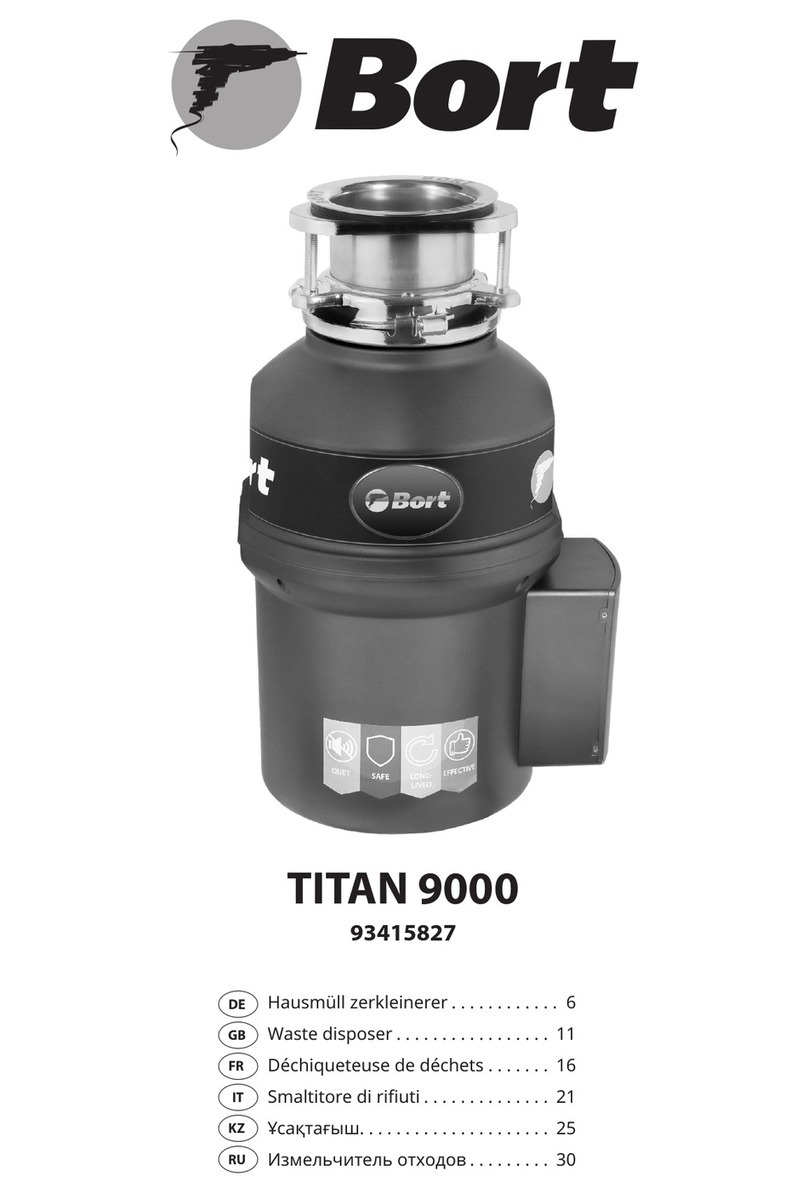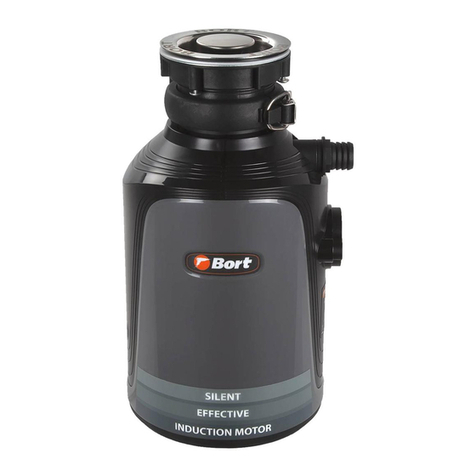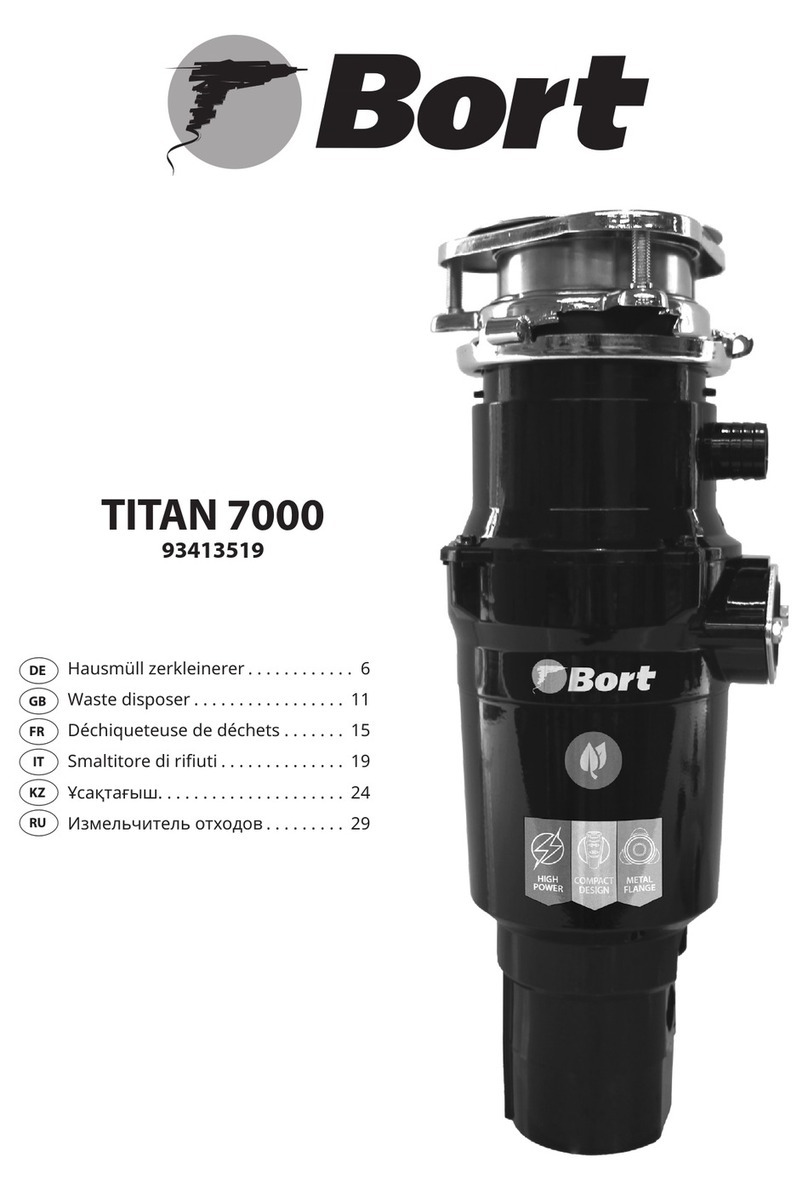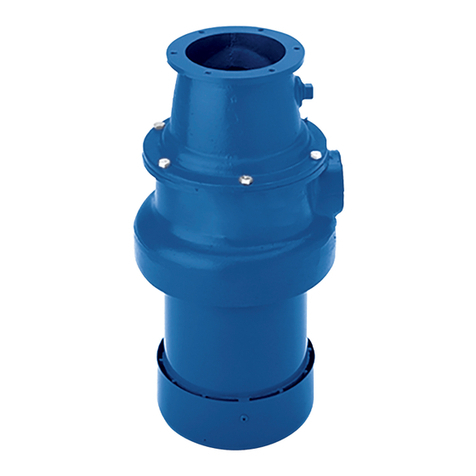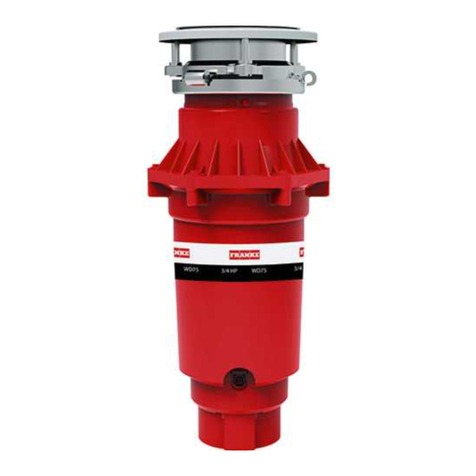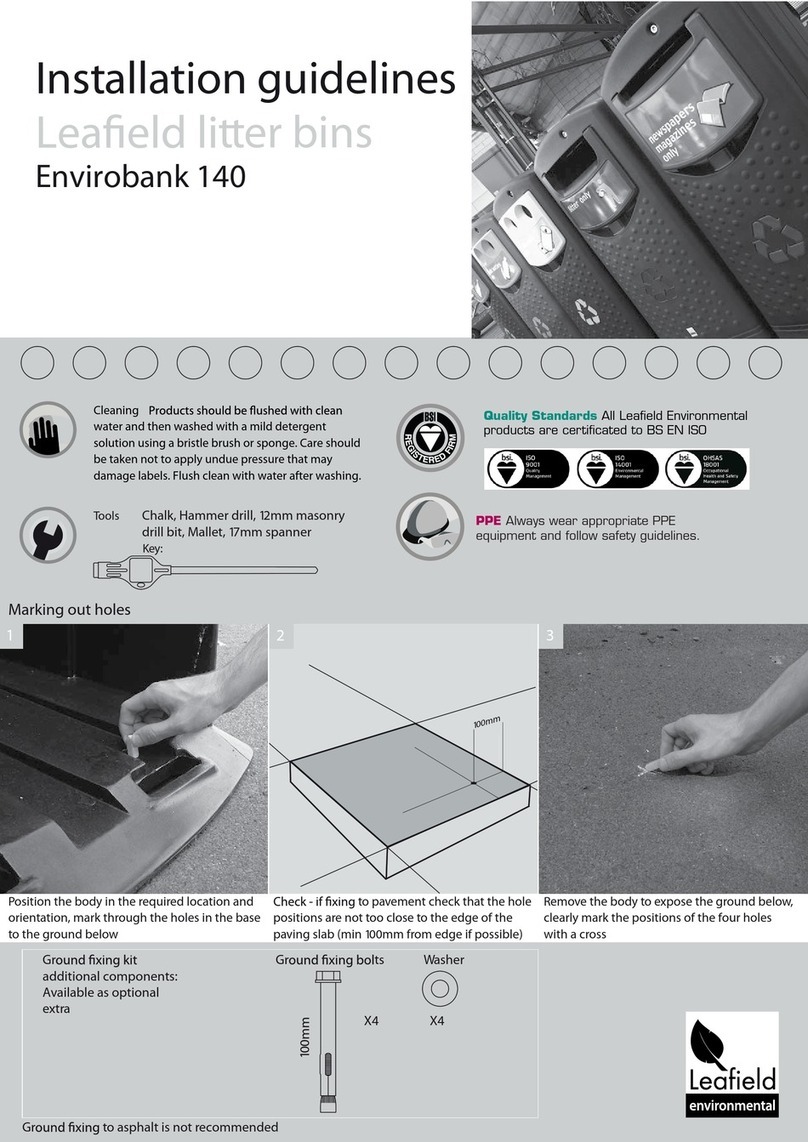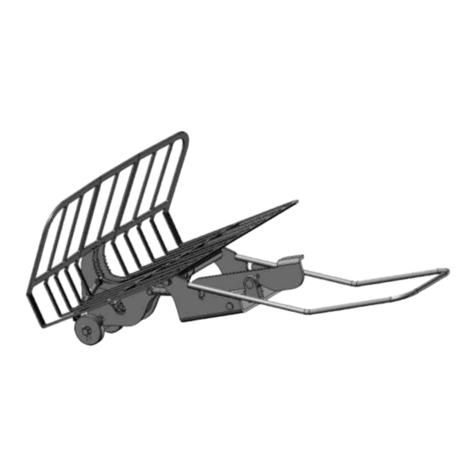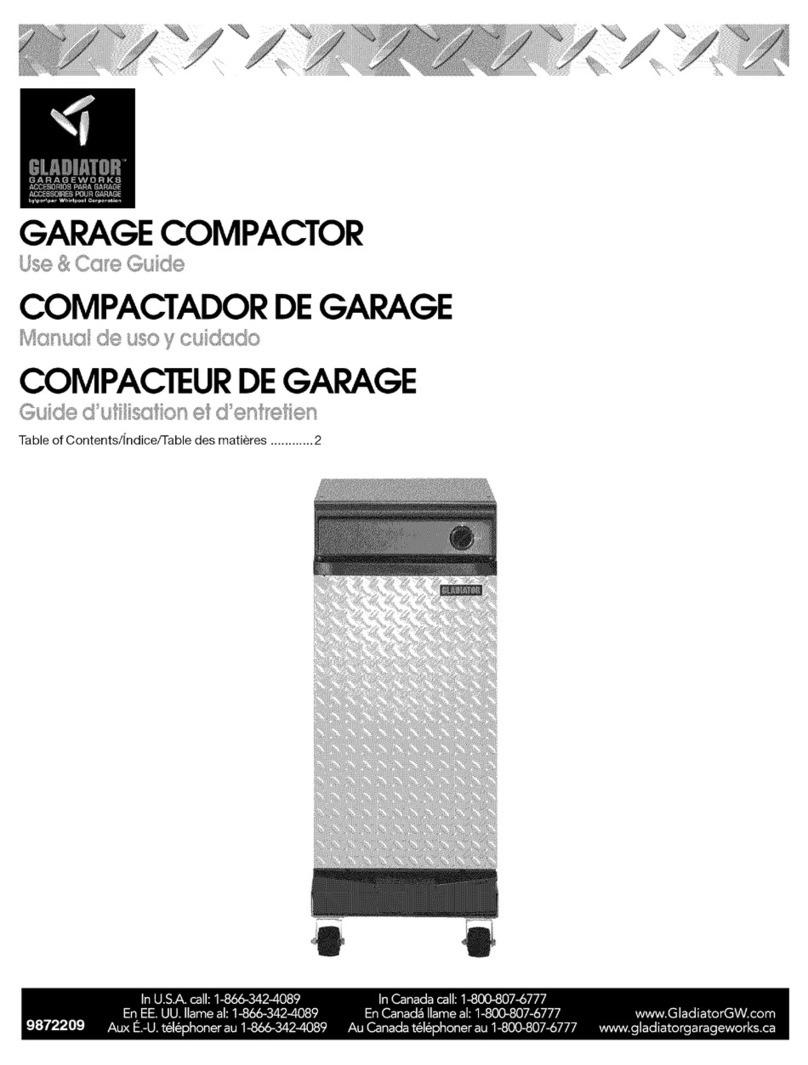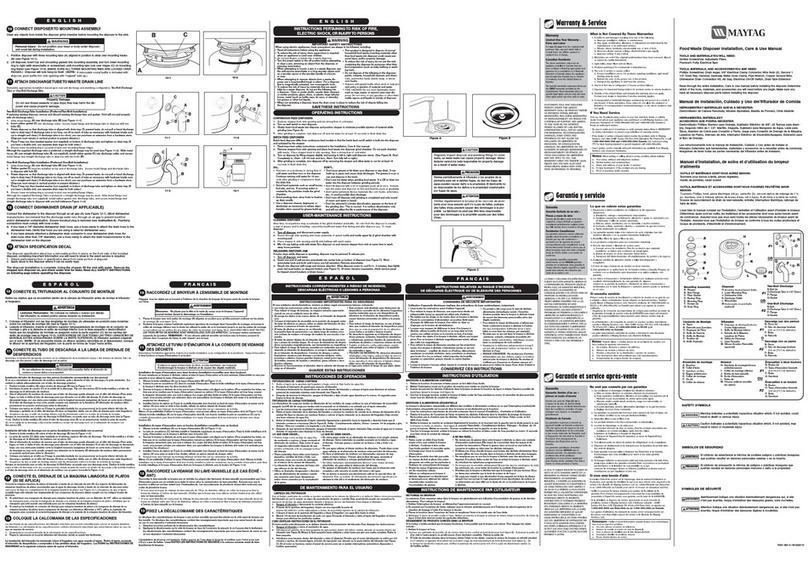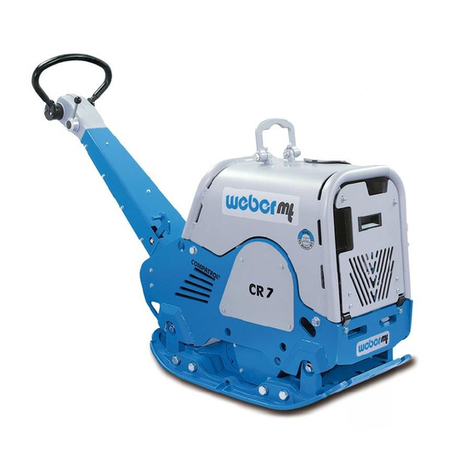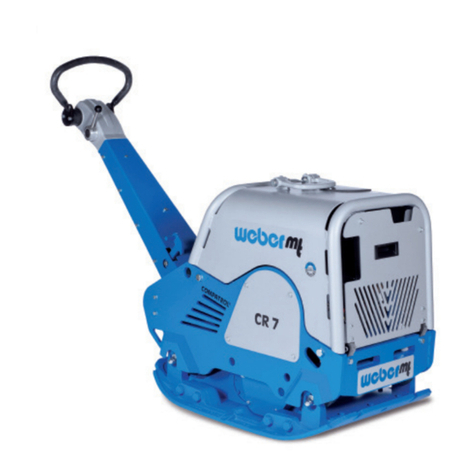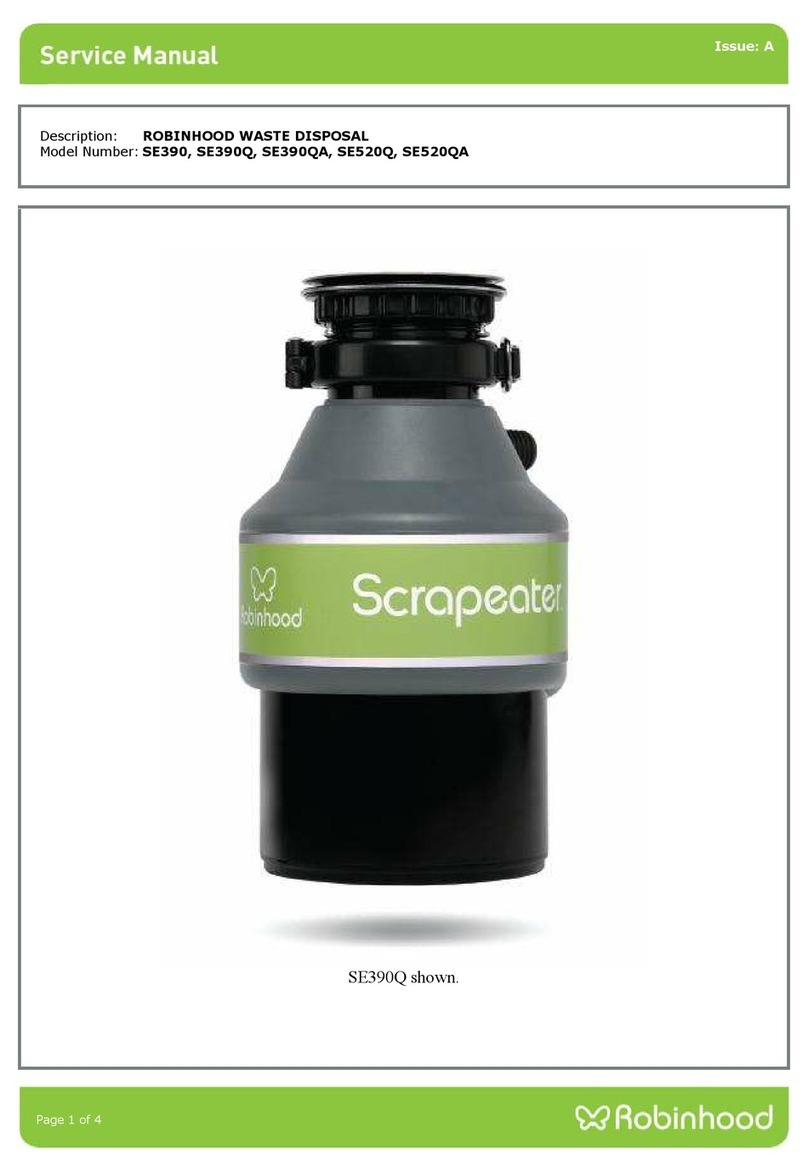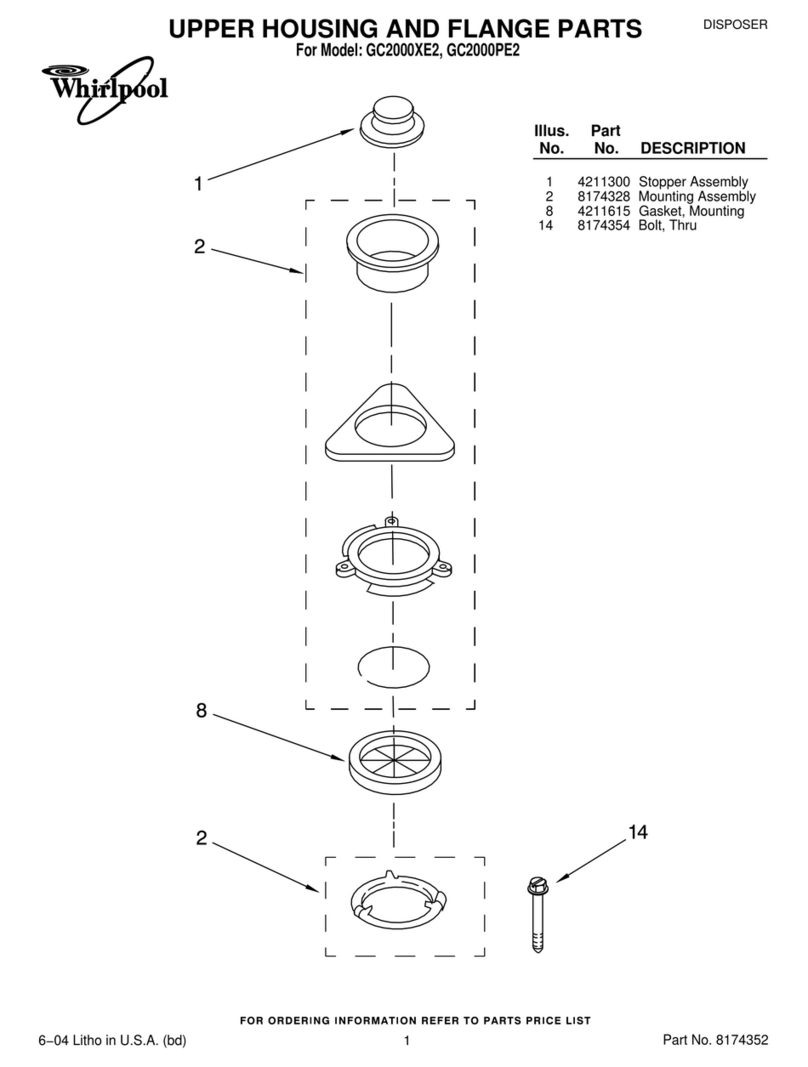
7
dungsrohr ausgestattet.
Der pneumatische Schalter ist aktiviert / deaktiviert sen-
ding a pneumatic impulse to the control unit.
INSTALLATION OF AIR SWITCH
1. Drill a hole with a diameter of 33 mm in suitable top or
top the panel of a sink. Some sinks may already have a sui-
table A hole for the opening of which is necessary remove
the cover.
2. Unscrew the nut from the body of the push button, whi-
le holding the stainless steel washer and rubber gasket in
place. Place one end of the PVC tube on the spout on the
body Press the other end to A hole in the table top and a
nut located under the countertop. (Fig.10.2)
3. Place the push button housing in the hole and tighten
the nut underneath countertop (enough arm eort). Do
not use the key to tighten nut. (Fig.10.3)
4. Take the other end of the duct and tightly put it on the
spout of the air switch located on the bottom of the dispo-
ser. (Fig.10.4) Hand tighten the clamping nut.
The disposer installation is complete. Before using the
product, read all of the instructions. operation and safety
contained in paragraph 10 of this manual.
In conclusion, install the plug in the sink in the Closed po-
sition. Fill the sink with water, Remove the plug and check
the connections on the a water leakage.
10. ATTENTION! IMPORTANT INSTRUCTIONS FOR
SAFETY
• If the air switch does not work, remove the plug power
supply from the outlet and check the air duct pneumatic
switch and delivered to the outlet electricity.
• This product is designed for grinding food residues at
home; the ingress of substances other than food into the
disposer may cause injury and / or damage property. To
reduce the risk of Do not use a washer with an installed
disposer not for food purposes (for example, for bathing a
child or washing your head).
• Children should be supervised adults and should not play
with a disposer. To reduce the risk of injury
It is necessary to keep a watchful eye on children use of
the product.
• If the wedging in the disposer is eliminated, turn o the
appliance and disconnect it from the electrical network.
Use a wrench for self-removal of jammed waste according
to description in the section „Elimination of jamming dis-
poser„.
• Use tongs or pliers to remove foreign objects from the
product.
• To reduce the risk of injury from particles that are thrown
out by the disposer, it is prohibited to use grinders without
noise shielding screen (Fig.8.3).
Place the plug in the drain hole, as shown in Fig. 11.2 or
11.4. Do not allow the following items to fall into the di-
sposer:
shells, including oyster, caustic means for cleaning pipes or
similar chemical products, glass, porcelain or plastic, large
(hollow) bones, metal objects (bottle caps, cans, or kitchen
appliances), hot fat or other hot liquids.
• Replace worn noise glossy screen / installation gasket /
protective reector if they are worn and are no longer able
to prevent waste or water.
• Wenn der Entsorger ausgeschaltet ist, verwenden Sie
einen Stopper, um dies zu verhindern Fremdkörper beim
Schleifen Kamera. Stellen Sie sicher, dass die Macht des
Entsorgers ist behindert.
• Bevor Sie den Reset-Knopf drücken, den Stau beseitigen
oder Fremdkörper aus der Zerkleinerungskammer entfer-
nen, stellen Sie sicher, dass Das Essen ist ausgeschaltet.
• Halten Sie Hände und Finger außerhalb der Reichweite
von Entsorgungskammer.
BRANDGEFAHR:
Um die Möglichkeit zu minimieren Nicht in der Nähe von
Feuerlöschern lagern Gegenstände wie Lumpen, Papier
oder Aerosoldosen. Lagern oder benutzen Sie kein Benzin
oder ähnliches brennbare Dampf-Gas-Gemische und Flüs-
sigkeit in der Nähe des Entsorgers.
Folgendes nicht zulassen Kamera-Produkte: Farben, Lö-
sungsmittel, Haushalt Reinigungsmittel und Chemikalien,
Automobilüssigkeiten, Kunststoverpackungen.
HANDBUCH
1. Verwenden Sie den Luftschalter (Abb. 11.1), um den Ent-
sorger zu starten.
2. Senken Sie die Lebensmittelabfälle langsam in die Kam-
mer und installieren Sie das Filtergitter in einer vertikalen
Position (so dass es durchießt Wasser) um Lärm zu redu-
zieren und möglich Werfen von Abfall während des Schlei-
fens (Abb. 11.2).
3. Nachdem der Schleifvorgang abgeschlossen ist, schalten
Sie die Entsorger und lassen Sie das Wasser für mindestens
15 laufen s, um die Abussleitung zu spülen.
SOLLTE
• Speisereste unter Druck mahlen kaltes Wasser nicht weni-
ger als 6 Liter / min.
• Mahlen Sie Feststoe wie kleine Knochen und Fruchtrück-
stände zum Reinigen Hackkammern.
• Grind Zitrusfrüchte, Melonen, Gemüse und Kaeeboh-
nen.
• Lassen Sie das Wasser nach dem Schleifen auslaufen min-
destens 15 Sekunden, um den Abuss zu spülen Pipeline.
• Ziehen Sie das Produkt aus der Steckdose, bevor Sie den
festsitzenden Rotor mit einem Werkzeug entfernen.
• Speichern Sie keine Objekte unter dem Display, um den
Zugri auf die Schaltäche zu gewährleisten Neustart.
UNTERLASSEN SIE
• Verwenden Sie kein heißes Wasser beim Schleifen Reste
